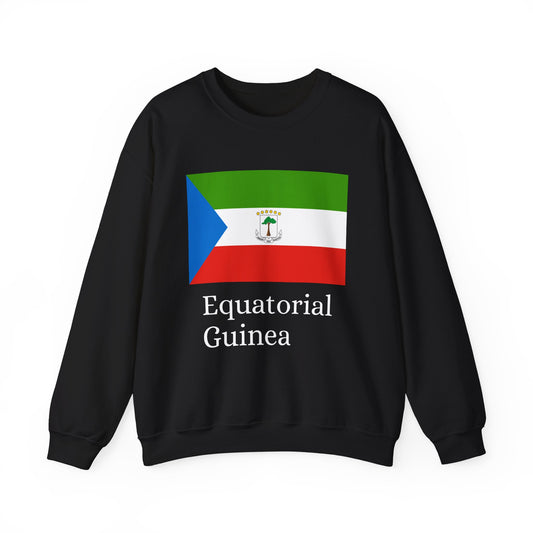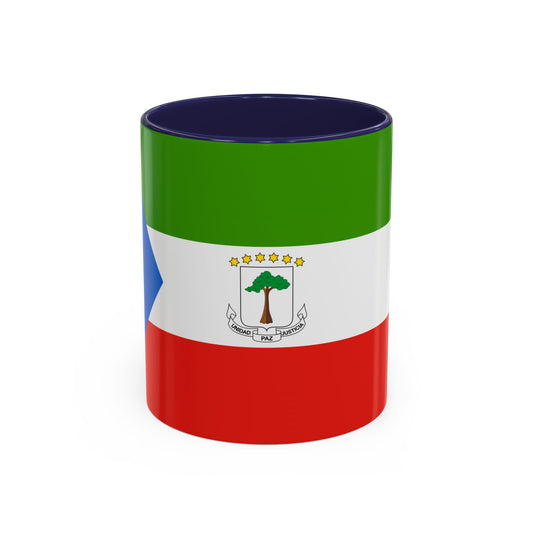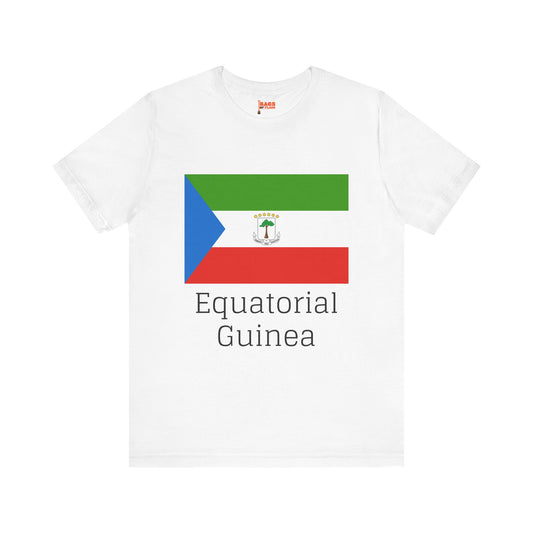-
Equatorial Guinea Backpack
Regular price $59.79 USDRegular priceUnit price / per -
Equatorial Guinea Leather Patch Hat
Regular price $18.85 USDRegular priceUnit price / per -
Equatorial Guinea Flag Sweatshirt
Regular price $34.15 USDRegular priceUnit price / per -
Equatorial Guinea Sweatshirt
Regular price $34.15 USDRegular priceUnit price / per -
Equatorial Guinea Mug
Regular price $11.65 USDRegular priceUnit price / per -
Equatorial Guinea Trucker Cap
Regular price $14.90 USDRegular priceUnit price / per -
Equatorial Guinea Hoodies
Regular price $34.40 USDRegular priceUnit price / per -
Equatorial Guinea Flag Hoodies
Regular price $34.40 USDRegular priceUnit price / per -
Equatorial Guinea T-shirts
Regular price $22.79 USDRegular priceUnit price / per -
Equatorial Guinea Flag on T-shirt
Regular price $22.79 USDRegular priceUnit price / per
Collection: Equatorial Guinea
The Equatorial Guinea flag symbolizes national pride and identity for the people of this West African country. With its unique design and colors, the flag holds historical significance and represents the nation's values. We will delve into the various aspects of the Equatorial Guinea flag, from its design and symbolism to its current relevance and exciting facts.
Overview of the Equatorial Guinea Flag

The Equatorial Guinea flag is characterized by its distinct design and vibrant colors, each element symbolizing essential aspects of the nation's identity and natural beauty. Here's a detailed breakdown of its design elements:
- Horizontal Stripes: The flag features three horizontal stripes arranged in green, white, and red from top to bottom.
- The top stripe is green, representing the lush vegetation that covers much of the country.
- The middle stripe is white, denoting peace and harmony within the nation.
- The bottom stripe is red, reflecting the blood of those who fought for the country's independence.
- Blue Triangle: On the hoist side of the flag, a blue triangle extends towards the center, symbolizing the Atlantic Ocean that touches the country's shores.
- Coat of Arms: Placed at the center of the flag, within the blue triangle, the coat of arms is a crucial element that highlights the nation's cultural heritage and historical pride. This includes:
- A silk cotton tree, also known as the "God tree," represents where the first treaty was signed with Spain.
- Six stars atop the shield, symbolizing the mainland and five main islands.
This design beautifully combines color and symbolism to create a flag that is not only visually striking but also deeply meaningful to the people of Equatorial Guinea.
Historical Context of the Flag

Adopting the current flag began as Equatorial Guinea approached its independence from colonial rule. Officially adopted on October 12, 1968, the flag marked a new chapter for the nation as it severed its ties with Spain. The inception of the flag was deeply influenced by the broader Pan-African movement, which sought to express the unity and identity of African nations through symbols and colors common across the continent. Over the years, the flag has remained relatively unchanged, serving as a constant emblem of the nation's sovereignty and the struggles overcome by its people to achieve independence.
The selection of the colors and the design elements, such as the coat of arms embedded within the blue triangle, were carefully chosen to reflect Equatorial Guinea's natural beauty and cultural richness. These elements together encapsulate the nation's journey from a colonial territory to an independent state, symbolizing a blend of historical pride and optimism for the future.
Symbolism Behind the Flag
The Equatorial Guinea flag is rich in symbolism, reflecting the nation's identity, history, and aspirations. Each color and symbol on the flag carries a specific meaning:
- Green Stripe: Signifies the abundant vegetation and natural resources that characterize Equatorial Guinea, emphasizing the country's connection to its land and environment.
- White Stripe: Represents peace and harmony, an ideal that the nation strives to maintain within its borders and in its relations with the global community.
- Red Stripe: Symbolizes the bloodshed and sacrifices made by the country's forebears during the struggle for independence, honoring their bravery and determination.
- Blue Triangle: Points to the Atlantic Ocean, a critical element of the nation's geography, economy, and way of life, highlighting its significance to the people and the country's future.
- Coat of Arms: Embedded within the blue triangle, it features a silk cotton tree and six stars, which encapsulate Equatorial Guinea's historical and cultural heritage. The silk cotton tree is a symbol of where Spain and local rulers first negotiated treaties. At the same time, the six stars represent the mainland and the five main islands, illustrating unity and solidarity among the nation's diverse regions.
Current Relevance of the Flag
Today, the flag of Equatorial Guinea continues to be a central element of national pride and cultural identity, serving multiple roles in society:
- National Events: It is prominently featured at Independence Day celebrations, symbolizing the country’s freedom and unity.
- Military Ceremonies: The flag is an essential part of military parades and honors, representing the courage and sacrifice of the armed forces.
- Public Display: Across Equatorial Guinea, the flag adorns public buildings, schools, and spaces, instilling citizens with national pride.
- Educational Purpose: The flag is an educational tool to teach the younger generation about the nation’s history, values, and aspirations.
Despite its widespread use and significance, the flag has also sparked discussions and debates, particularly regarding its design and the inclusion of the coat of arms. Some advocate for a redesign to better reflect modern values and aspirations. However, these discussions do not diminish the flag's role as a powerful symbol of the nation's identity and heritage.
Additional Facts about the Equatorial Guinea Flag
Several protocols and customs are associated with the display and handling of the Equatorial Guinea flag, emphasizing its importance as a national symbol. For instance, strict guidelines ensure that when the flag is flown, it is done with honor and respect. It must never come into contact with the ground or be used in any manner considered disrespectful. In addition to its presence at official ceremonies and public spaces, the flag also plays a significant role in the citizens' daily lives. Every morning, across the country, the flag is ceremoniously raised, and in the evening, it is lowered, a practice that instills a sense of national pride and unity.
Another exciting aspect is that while the flag’s design and colors are rich in symbolism and meaning, reflecting the country's diverse heritage and aspirations, it stands out for its unique combination of elements compared to other national flags. These practices and characteristics highlight the flag's deep significance in fostering a collective identity and commemorating Equatorial Guinea's journey and achievements as a nation.




















